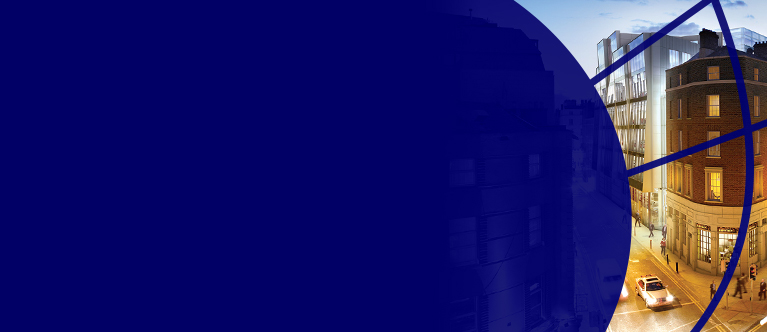Protected Disclosures
Purpose
Whistleblowing is the term used when a worker (a "discloser'') discloses certain information on wrongdoing, referred to as a "protected disclosure". A discloser has certain protections under statute when a protected disclosure is made to the Irish Aviation Authority (IAA). The purpose of this information note is to provide guidance to a discloser on how to make a protected disclosure to the IAA.
Scope
The Irish Aviation Authority is prescribed by statute (S.I. 367/2020) as a body to receive disclosures relating to:
- All matters relating to the safety regulation of Irish Civil Aviation
- All matters relating to the oversight of civil aviation security in the State.
- All matters relating to the setting of the maximum level of airport and aviation terminal services charges.
- All matters relating to the licensing of the travel trade in the State, including the granting of licences to tour operators and travel agents.
- All matters relating to the licensing of airlines and approval of groundhandling services providers.
- All matters relating to the discharge of the State’s responsibilities for schedule co-ordination and slot allocation and the appointment of a schedules facilitator and slot co-ordinator.
- All matters relating to the monitoring and enforcement in the State of acts adopted by an institution of the European Union regarding air passenger rights and the provision of assistance to passengers with reduced mobility.
The Irish Aviation Authority is an independent and autonomous reporting channel for receiving and handling information from disclosers and all disclosures will be dealt with accordingly. Disclosers are encouraged to make reports to the IAA at the earliest opportunity and in an appropriate way, in the knowledge that their concerns will be taken seriously, investigated where appropriate, and that their confidentiality will be respected in accordance with the provision of the Protected Disclosures Act 2014.
The information disclosed must show one or more relevant wrongdoings as provided for in the Protected Disclosures Act 2014 (“the 2014 Act”). The discloser must also meet the other requirements in the 2014 Act in order to qualify for the protection of the 2014 Act.
The Protected Disclosures Act 2014 as amended by the Protected Disclosures (Amendment) Act 2022, protects workers in the public, private and not-for-profit sectors from retaliation if they speak up about wrongdoing in the workplace. Persons who make protected disclosures, sometimes referred to as whistleblowers, are protected by this law. They should not be treated unfairly or lose their job because they have made a protected disclosure
How to make a Protected Disclosure to The Irish Aviation Authority
The IAA has appointed a Designated Person for the receipt of disclosures. Disclosures may be made to the Designated Person of the IAA by email or post at the following contact details:
Protected Disclosures Officer
Irish Aviation Authority
The Times Building
11/12 D’Olier Street,
Dublin 2
Email: disclosures@iaa.ie
Protected disclosures made to the Designated Person will be communicated within the IAA in order to follow them up, consistent with provisions of the 2014 Act.
A protected disclosure may be made verbally, but in the interests of clarity and to avoid misinterpretation or misunderstanding, it is preferable that a protected disclosure be made in writing by email or post. If the disclosure is made verbally, the Designated Person will, where possible, confirm the details of the disclosure, in writing, to the discloser without undue delay.
Upon request by the discloser, a disclosure can also be received by means of a physical meeting where practicable, and within a reasonable timeframe and the Designated Person will be accompanied by one or more other persons to facilitate the making of a record of the disclosure. Any personal data collected will be dealt with in accordance with the IAA’s Data Retention Policy and processed in accordance with the provisions of the Data Protection Act 2018, Regulation (EU) 2016/679, Directive (EU) 2016/680 and Regulation (EU) 2018/1725.
It is recommended that at a minimum, a disclosure includes:
- that the disclosure is being made as a protected disclosure
- the discloser's name, position in the organisation, place of work and confidential contact details
- the date of the alleged wrongdoing (if known) or the date the alleged wrongdoing commenced or was identified
- whether or not the alleged wrongdoing is still ongoing
- whether the alleged wrongdoing has already been disclosed and if so, to whom, when, and what action was taken
- information in respect of the alleged wrongdoing (what is occurring / has occurred and how) and any supporting information.
Upon receipt of your protected disclosure, the IAA:
- Will acknowledge receipt of your Protected Disclosure within 7 days;
- Will protect your identity in as far as possible, but the IAA may be obliged to reveal your identity so that a proper investigation can be carried out;
- Will undertake an initial assessment and assign a designated person to investigate, where prima facie evidence exists that wrongdoing may have occurred;
- May need to contact you to obtain additional information as necessary;
- Will provide feedback to you within 3 months and at 3 month intervals thereafter if required/requested;
- May elicit assistance and /or assign responsibility for investigating the alleged wrongdoing to a local authority or other relevant body.
Making a Protected Disclosure as an employee of the IAA
When making a Protected Disclosure as an employee of the IAA, workers should contact the Designated Person with information concerning the relevant wrongdoing, who will designate a person or persons to look into the matter in accordance with the IAA’s Protected Disclosure (Whistleblowing) Policy.


